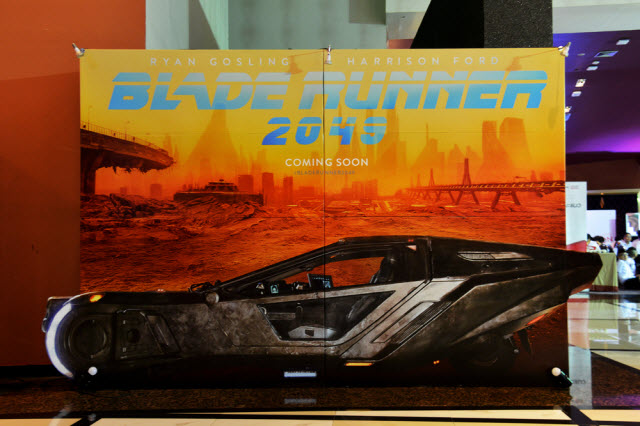Blade Runner fans, myself included, have had to wait 35 years for the sequel to a movie that marked a turning point in cinematic history and inspired so many others, with Ghost in the Shell being just one example. Having seen Blade Runner 2049, I can say that it has picked up on current issues and transplanted them into its own universe.
Artificial Intelligence and Machine Learning applied to virtual assistants
The universe of Blade Runner 2049 is an evolution of what we saw in the original movie. 30 years have gone by in Ridley Scott’s universe, and it shows in several different ways. One of these is the evolution of virtual assistants and their capacity for learning and forming a bond with their owners. In the movie, this is represented by Joi, a system that coexists with the user and is embodied in holographic form, learning from preferences and accumulating experiences in such a personal way that it's hard to distinguish the assistant from a real human being.
At present, virtual assistants are a long way from the image depicted in Blade Runner 2049. However, we are seeing companies take major steps in this direction. We have Siri, Cortana, and Alexa, to name but a few, and although many users still regard them as a novelty, little by little, they are carving out a place in our lives.
As for the replicants, these are still designed to perform specific tasks, as the Nexus-6 models were, but they have improved in both design and emotion. We also find out that the latest generation of Nexus (the Nexus-8) had an added "surprise" that the Tyrell corporation included before falling from grace due to an incident, described below.
In short, it can be said that the replicants are still essentially slaves, destined to perform hard labor and high-risk tasks, or serve as sex toys. The difference that we saw 35 years ago on the big screen is their apparent total loyalty to their owners and blind obedience to following orders that may even cause them harm.
Blackout
During the movie, numerous references are made to the "blackout". If you want to know what this is about, you need only watch one of the three shorts that were released before the movie’s premiere: Blade Runner 2022. The other two (Blade Runner 2036 and Blade Runner 2048) also provide interesting information about this world and its characters, so I would recommend checking them out.
As for the incident itself, I don't want to say too much because it is all explained in the short movie; suffice to say that it caused almost all electronic systems to stop working and a lot of archived data to be lost, with only data stored on physical media, such as paper, remaining.
This event reminds us of the fragile nature of the data we store on disks, memory cards or even the cloud. There is no need for an incident like the one described in the movie to take place for our data to be at risk: a simple ransomware attack can result in us losing many gigabytes of valuable information, both personal and corporate, with no chance of recovery.
An incident like the one described in the Blade Runner universe would be a disaster of catastrophic proportions and is a very real threat that we need to be prepared for. This is especially true for everything related to critical infrastructures or key data, not to mention personal information which is valuable to its owners.
The importance of memories
With regard to the previous point, in Blade Runner 2049, personal memories are of special importance. All of us who have seen the original movie know that the replicants have had implanted memories that they did not experience, but that they believe to be true. This is something that is explored in greater depth in the sequel, where we get to meet one of the characters whose job it is to create those memories.
In our digital world, this would be similar to storing our memories and experiences on social networks. We all like to share these experiences, and there are even users who feel like they haven't experienced a trip fully unless they post photos and videos of it.
There have even been cases of social media users who have created false memories by editing photographs to make their contacts believe that they were away traveling in far-off lands. In the eyes of those contacts, the trips really happened, and only the user knows that they are fake. This is the reverse of what we see in Blade Runner, where the replicants believe their memories are real and those investigating them know the memories are implanted.
Curious absence of smartphones
It is curious that in a movie with such a marked cyberpunk identity, none of the characters use any device that we could consider as similar to a smartphone. There are phone booths, videocalls from devices installed in offices and cars, and portable devices, such as the one that allows the Joi virtual assistance system to leave the home and accompany its owner wherever they go.
In one scene in particular, we also see one of the characters using a device similar to Google Glass to control drones, which, incidentally, are very much present in the movie as assistance and surveillance devices.
It is, without a doubt, a notable absence that remains in line with the original world created 35 years ago, in which the idea of a smartphone had not even been conceived. And although technology has evolved, we also see how it has not done so in the same way as in our world. But then, who wouldn't trade in their smartphone for a flying car?
Conclusion
Blade Runner 2049 is a highly recommendable movie, especially if you liked the first part, because it continues down the path set out in the original very successfully. Although it takes place in a reality different to our own, there are still similarities that should make us think about whether the evolution of technology, and the use we make of it, is going in the right direction.





